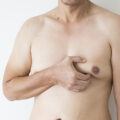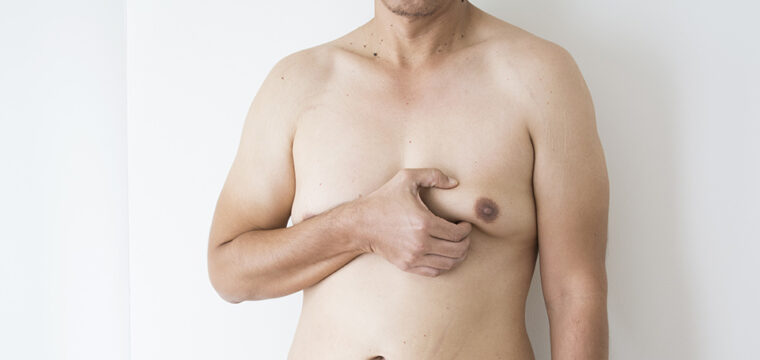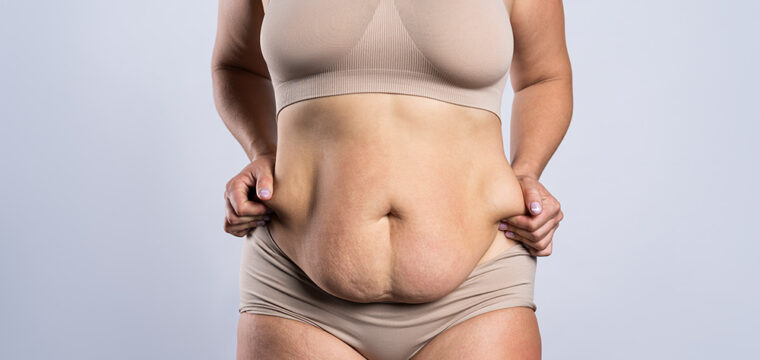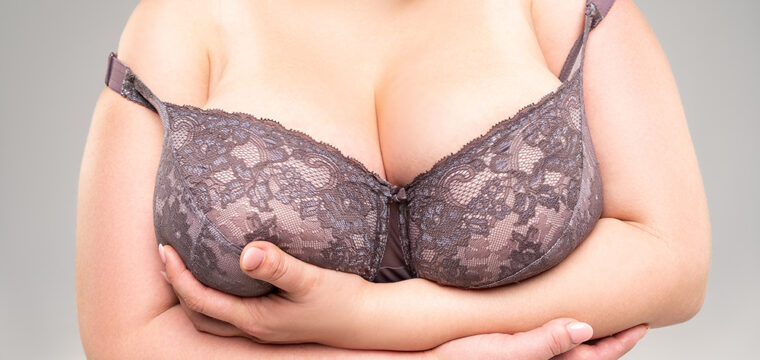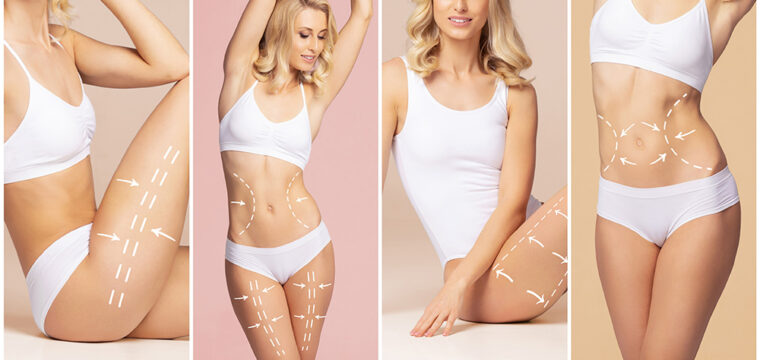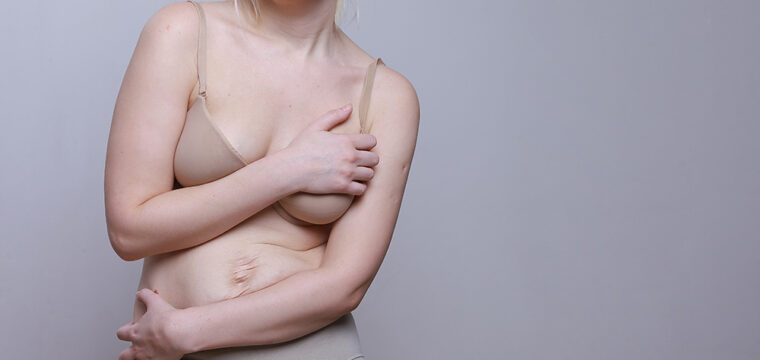- 23 September 2025
- Mr A. Siddiqui
Last updated on October 1, 2025
Table of Contents
ToggleFor many men, the chest is one of the most visible markers of confidence. But when extra tissue develops, it can sometimes be difficult to know if it’s simply chest fat or a medical condition called gynaecomastia. The challenge lies in identifying whether the fullness of the chest is caused by fatty deposits, glandular enlargement, or a combination of the two.
At Breast & Body UK, we can help men with understanding the difference between chest fat and gynaecomastia and more importantly, offer effective treatments to restore a firmer, flatter, and more masculine chest.
This guide will walk you through everything you need to know: the causes of chest fat, what gynaecomastia really is, how to tell them apart, treatment options, and when surgery may be the right solution.
What is Chest Fat?
Chest fat, sometimes called pseudogynecomastia, is caused by excess adipose (fatty) tissue accumulating around the pectoral muscles. Unlike gynaecomastia, which is glandular, this condition is entirely fat-based.
Causes of Chest Fat
Weight gain: Extra calories are stored as fat, and for some men, the chest is a prime storage site.
Genetics: Some men naturally carry fat in the chest area, even at a relatively healthy weight.
Hormones: While less dramatic than gyno, hormone fluctuations can still influence where fat is stored.
Sedentary lifestyle: Lack of resistance training often means poor muscle tone, which makes chest fat more noticeable.
Characteristics
- Feels soft and can be pinched easily.
- Reduces with weight loss, exercise, and dietary changes.
- Usually symmetrical, although uneven fat distribution can occur.
What is Gynaecomastia?
Gynaecomastia is the enlargement of male breast glandular tissue, not just fat. It often presents as a firm, rubbery mass directly under the nipple, sometimes with tenderness.
Causes of Gynaecomastia
Hormonal imbalance: Too much oestrogen or too little testosterone.
Puberty: Common in teenage boys, often resolving naturally within a couple of years.
Ageing: Testosterone declines with age, increasing risk.
Medications: Some drugs (antidepressants, steroids, heart medications) are linked to gyno.
Underlying conditions: Liver disease, thyroid disorders, or testicular issues.
Characteristics
- Firm tissue beneath the nipple, not just soft fat.
- Often feels sore or tender.
- Doesn’t disappear with weight loss.
- Can be one-sided (unilateral) or both (bilateral).

Chest Fat vs Gynaecomastia: Key Differences
| Features | Chest Fat | Gynaecomastia |
|---|---|---|
| Cause | Fat accumulation | Glandular tissue growth |
| Feel | Soft and jiggly | Firm and rubbery |
| Location | Spread across chest | Concentrated under the nipple |
| Response to weight loss | Reduces with fat loss | Persists despite fat loss |
| Pain / Tenderness | Rare | Common |
| Appearance | General fullness | Puffy nipples and a breast-like shape |
In some cases, men may experience both chest fat and gynaecomastia simultaneously.
How to Lose Chest Fat
If your chest concerns are purely fat-based, lifestyle changes can help significantly.
Diet and Nutrition
A calorie-controlled diet built around whole foods is the cornerstone of fat loss. Focus on lean proteins such as chicken, fish, or tofu to preserve muscle mass, while incorporating plenty of vegetables, fibre-rich grains, and healthy fats.
Reducing alcohol, sugary drinks, and processed foods helps cut down on empty calories that contribute to fat storage. Staying hydrated also supports metabolism and keeps your skin healthy.
Exercise
Cardio training, such as running, swimming, or cycling, helps burn calories and reduce overall body fat.
Strength training is equally important. Incorporate exercises such as push-ups, bench presses, and cable flies to develop the pectoral muscles beneath the fat, helping to create a firmer, more defined chest. High-Intensity Interval Training (HIIT) is another powerful tool, as short bursts of effort with minimal rest can accelerate fat burning.
Lifestyle Tips
Beyond diet and exercise, lifestyle factors play a role. Getting enough quality sleep helps balance hormones like testosterone and cortisol, both of which influence fat storage.
Reducing stress is equally important, as prolonged stress leads to elevated cortisol levels, which often encourage fat retention in the chest and abdominal areas.
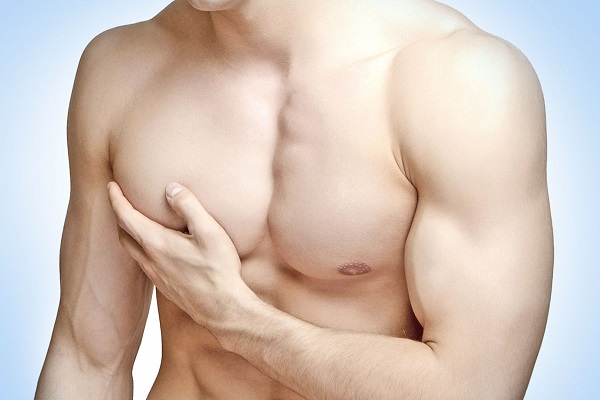
Treatment for Gynaecomastia
Unlike chest fat, true gynaecomastia cannot be reversed with lifestyle changes alone. The condition is glandular in nature and usually requires surgical correction.
Male Chest Reshaping at Breast & Body UK
At Breast & Body UK, we specialise in male chest reshaping surgery for patients with gynaecomastia or stubborn chest fat. For men with firm glandular tissue beneath the nipple, direct excision removes the gland. Where excess fat is also present, liposuction techniques are used to smooth and sculpt the chest.
Our surgeons perform several advanced liposuction methods:
Traditional Liposuction – Uses a cannula to remove fat through tiny incisions.
VASER Liposuction – Employs ultrasound technology for precision fat removal while preserving surrounding tissues.
360-Degree Liposuction – Targets fat across the chest and torso for a balanced, masculine contour.
In many cases, the best outcomes come from a combination approach and removing glandular tissue and fat together. This ensures a flatter, firmer, and more natural-looking chest.
Recovery Timeline
Recovery is straightforward but does require rest. During the first week, swelling, bruising, and some discomfort are expected. By weeks two to three, most men return to light activities and work. Gym workouts, except for chest exercises, can usually resume around weeks four to six. Full results are visible within three to six months as swelling subsides.
Expected Results
Surgical correction results in a flatter, firmer chest and improved nipple projection. With a stable weight and healthy lifestyle, results are long-lasting.
Cost Considerations
When comparing liposuction vs gynaecomastia surgery, the cost varies depending on several factors. These include whether glandular excision is needed, the extent of fat removal (such as single-zone vs 360-degree contouring), the surgeon’s expertise, and additional costs such as anaesthesia and facilities.
While liposuction alone may be more affordable, many cases require a combination of techniques. At Breast & Body UK, we also offer finance options to help make male chest reshaping more accessible and manageable.
Consulting with a Leading Plastic Surgeon at Breast & Body UK
Gynaecomastia is a common condition that often causes both physical and emotional discomfort. While lifestyle changes and exercise can improve overall health, surgical correction remains the most effective and permanent solution for true glandular gynaecomastia.
At Breast & Body UK, every procedure is fully tailored. During your free consultation, our experienced surgeons will assess your chest and determine whether you are dealing with chest fat, gynaecomastia, or both, and recommend the most suitable treatment plan. With a focus on safety, natural results, and long-term satisfaction, we guide you through every step of the journey.
If you are ready to explore your options, book a free consultation today.
FAQs
What does gynaecomastia look like?
Gynaecomastia often presents as puffy nipples or a rounded breast-like appearance, especially under the areola. The tissue feels firmer than fat and may cause tenderness.
What does chest fat look like?
Chest fat tends to look softer and more spread out across the chest. It doesn’t usually cause nipple puffiness and reduces with weight loss.
How long does it take to lose chest fat?
With consistent diet and exercise, noticeable chest fat reduction may take 8–12 weeks. However, results depend on overall body composition and lifestyle habits.
Can gynaecomastia go away naturally?
Pubertal gynaecomastia often resolves within 1–2 years, but adult gynaecomastia typically persists. Surgery is usually required for permanent correction.
How can I tell if I have gyno or if it’s just fat?
Pinch beneath your nipple: if you feel a firm, rubbery disc, it’s likely gynaecomastia. If it feels soft and jiggles, it’s more likely chest fat.
Can chest exercises fix gynaecomastia?
No. While exercise can tone muscles and reduce fat, glandular tissue will remain. Only surgery removes true gynaecomastia.
The information on the website is for general guidance only and cannot be used as a basis to make a surgical decision, an initial consultation with our doctor is required to help patients make an informed decision before proceeding with any surgical procedure. Any surgical or invasive procedure carries risks. Before proceeding, you should seek the opinion of an appropriately qualified health practitioner
About The Author
Mr A. Siddiqui
Mr Siddiqui is a Consultant Plastic and Cosmetic Surgeon, based at The Countess of Chester Hospital in the Department of Plastic and Reconstructive Surgery. He trained extensively in plastic surgery before becoming a Consultant in the NHS and developing a private practice in Manchester and other areas of the Northwest. He is considered to be one of the top 10 cosmetic surgeons in Manchester.
Categories
- Brachioplasty (3)
- Breast Augmentation (23)
- Breast Health (12)
- Breast Implants (17)
- Breast Lift (10)
- Breast Reduction (14)
- General (2)
- Gynecomastia (2)
- Labiaplasty (2)
- Liposuction (13)
- Mummy Makeover (9)
- Skin Cancer (1)
- Skin Care (1)
- Tummy Tuck (21)
Recent Posts
23 September 2025
16 September 2025
9 September 2025
Liposuction vs. CoolSculpting: How to Choose the Best Option for You


